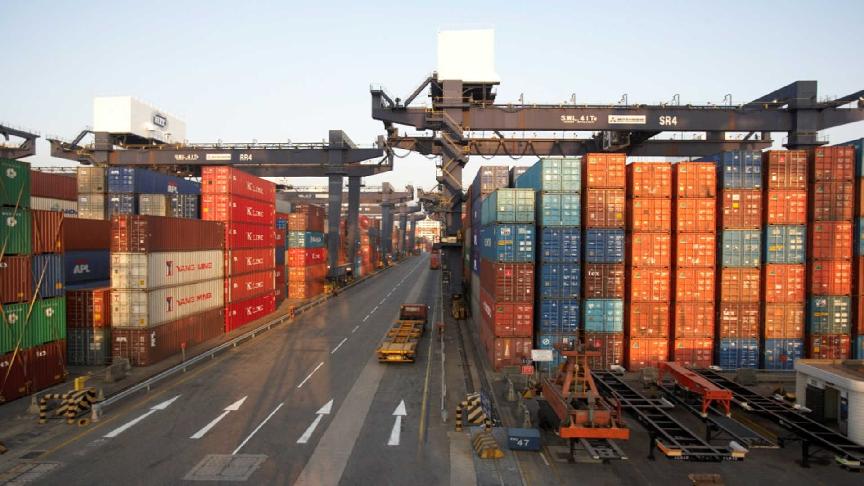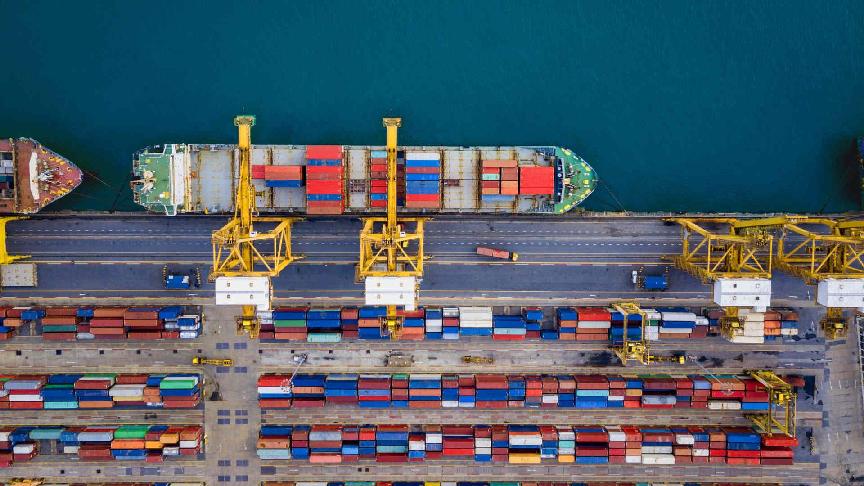As a leader in sea logistics, Kuehne+Nagel closely tracks and collects data on the movement of vessels, including actual arrivals and vessel delays. Kuehne+Nagel is publishing a summary of this analysis in monthly Schedule Reliability reports based entirely on neutral data. This summary is available within SeaNews in seaexplorer as well as in myKN for all Kuehne+Nagel customers and myKN subscribers.
Global On-Time Performance
Seaexplorer data show that global on-time performance improved month-on-month in September, increasing from 65.0% in August to 68.9%. As shown in the graph below, schedule reliability has generally been on an upward trend throughout 2023. The year-on-year improvement exceeded 20 percentage points, jumping from 46.6% in September last year.

The global monthly average delay in the arrival of LATE vessels remained the same month-on-month. The second graph shows that for the month of September, LATE container vessels were late for 3.5 days on average. However, a significant improvement occurred year-on-year, as the average delay in September 2022 was 5.4 days.

The case is similar for ALL vessels this month. The monthly average delay in the arrival of ALL vessels globally remained 1.1 days. Compared to last year, this delay is nearly 50% shorter. The global monthly average delay in arrival of ALL vessels was 2.5 days in September 2022.

Reliability per Trade Lane
When comparing the three major trade lanes (Transpacific, Transatlantic and Asia-North Europe), we find the Transatlantic was the lane with the highest on-time performance, achieving 74.1% reliability in September. However, Asia-North Europe was the trade that improved the most of the three, increasing by 7.4 percentage points to 70.4%.
Out of the three trades, the Transpacific had the lowest percentage at 55.3%, improving by 4.5 percentage points month-on-month.
Of all the main trades shown below, vessels on the North Europe – South America route were the most on-time, with a reliability rate of 84.7%. On the other hand, the lane with the least schedule reliability was the Transpacific, despite improving from 50.8% in August to 55.3% in September.

Reliability on the Asia - South America trade
The Asia – South America trade was the route with the second lowest reliability, at 55.6%. As per seaexplorer data, on-time performance on the eastbound of this route started the year strongly at 77.7% reliability. It fluctuated throughout the year to reach 60% in September, which is a drop from 66.4% in August.
LATE ships sailing from Asia to South America were 3.5 days late on average in September. However, the average improved month-on-month by nearly one day, from 4.7 days in August.

Vessels moving westbound on this lane achieved a schedule reliability of 53.5% in September. Unlike on the eastbound, this constitutes an improvement by 4.6 percentage points compared to August. The monthly average delay in the arrival of LATE vessels on this leg is relatively better than the eastbound, as they were 3.4 days late on average in September.
Conclusion
September’s global on-time performance reached 68.9%, improving nearly 4 percentage points compared to August. The development last month remained generally consistent with the upward trend of this year.
Out of the three major trade lanes (Transpacific, Transatlantic and Asia-North Europe), the Transatlantic had the highest on-time performance, at 74.1%. Reliability on the Asia-North Europe was 70.4%, and 55.3% on the Transpacific.
Throughout the month of September, leading container carriers have announced multiple blank sailings, mostly on the Transpacific trade. This is common for the month preceding the Chinese Golden Week celebrations, which usually fall in the first week of October, and a large number of factories in China shut down for the holidays.
Methodology
Calculating the on-time performance
To calculate the on-time performance of a service, Kuehne+Nagel uses vessel schedules from carrier(s) offering that service. Only carrier schedules that match our quality criteria are used for the schedule reliability calculation.
As carriers update schedules constantly, they become more accurate the closer vessels get to a destination port. For this reason, we have implemented a "schedule freeze period" of 14 days prior to actual vessel arrival. In other words, we benchmark the actual arrival with what carriers last announced 14 days earlier. To identify the actual time of arrival, Kuehne+Nagel consumes AIS (Automatic Identification System) vessel data. All vessels which arrive within a +/- 24-hour window at the port of destination compared to the last announced arrival are considered to be on time.
Assigning carrier services to multiple trade lanes
Many services operate on various trade lanes (e.g. a carrier service between Asia and North Europe also calls ports in the Middle East and or the Mediterranean), and therefore carrier services may be listed in multiple trade lanes.
Definition of trade lanes
There is no common standard for the definition of trade lanes. This means, depending on the source, you will find different trade lanes as well as different regions, countries and ports assigned to a trade lane. Kuehne+Nagel has defined its own way of mapping and has assigned ports to these trade lanes accordingly. On-time performances of vessels are captured in our reports on defined main trades, meaning trades moving large container volumes on vessels. Therefore, niche trades and services within one trade, called „Intra Trade“ services (e.g. Intra-Asia, Intra-Europe) are currently out of scope.







